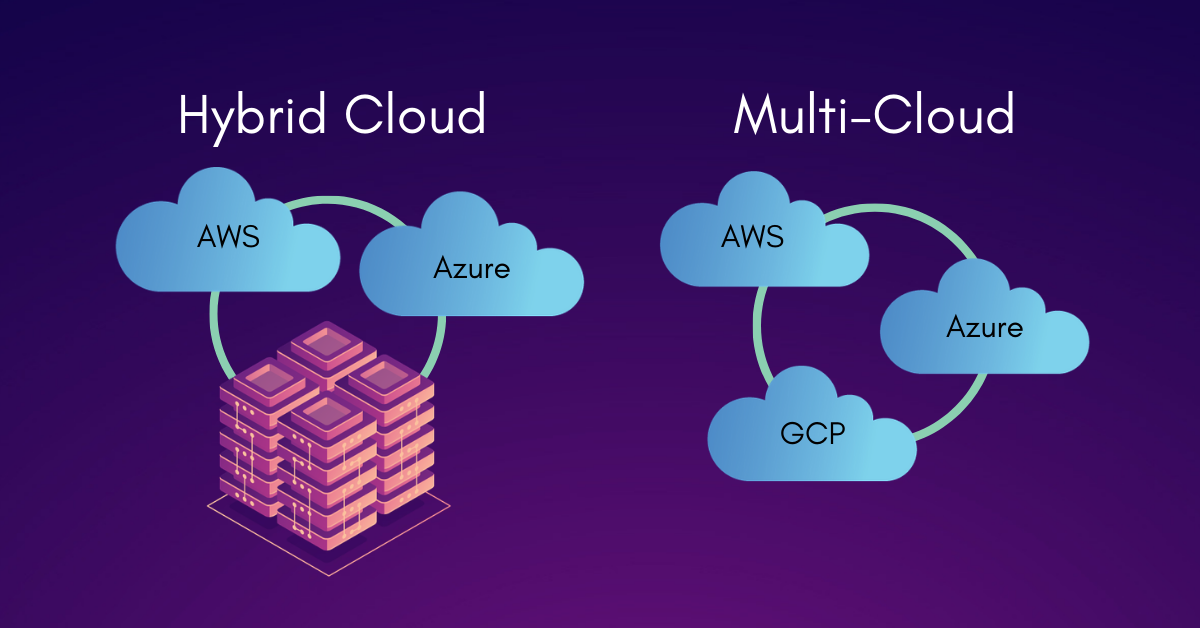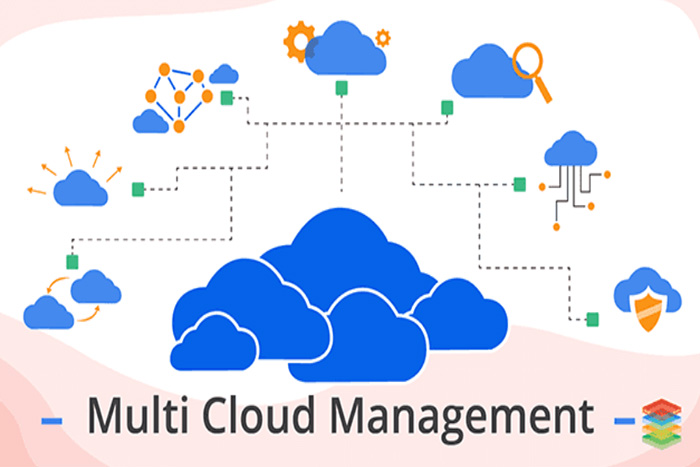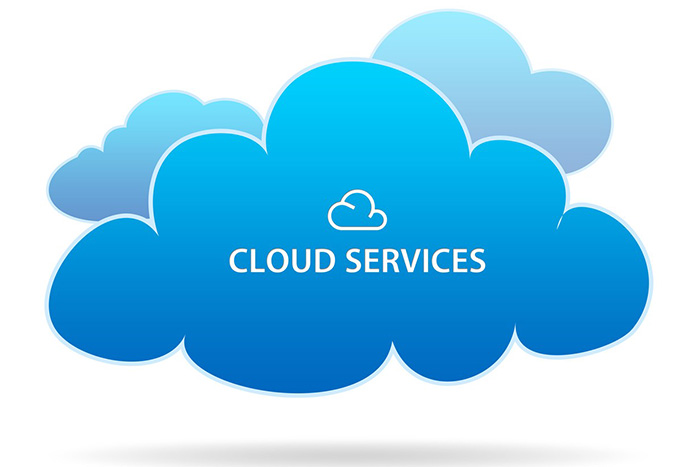The multi-cloud approach to building infrastructure is based on the company’s use of IT resources and solutions of several external contractors and the selection of an individual portfolio “by parameters” of the business from a wide range of services across the entire cloud market.
Multi-clouds can be both the next step after working with one provider, and the only possible model for organizing a project that requires resources from different providers. The performers differ from each other in a whole range of parameters: from physical characteristics and vendor content of the infrastructure to the pricing model and the quality of technical support. This is the main feature of multicloudness! The providers themselves secretly occupy certain niches in the market, in each of which someone understands better.
The motto of the users of the multi-cloud model is “take the best from the market”.

With the individual requests of each customer, a single provider is unlikely to find the perfect set for all needs. The solution can be a combination of different models. For this reason, cloud service providers for the most part are moving away from the concept of a “box solution”, as they seek to make the service “discrete” for further customization for the customer.
Often, having spent time looking for an executor of a complex cloud project and being disappointed, the company undertakes to implement the project on its own, despite the obvious advantages of the cloud “constructor”, with which you can cope faster, cheaper and without unnecessary headaches.
Examples of a multi-cloud approach:
For example, for CII facilities, customers choose a certified cloud with mature information security tools, for business intelligence systems – a productive cloud environment or ready-made SaaS solutions, replicate databases with commercial information from a private cloud to a backup infrastructure, and organize remote work of employees using VDI – virtual desktops in the cloud. With a multi-cloud approach, they will tend to place all orders with different vendors.
The paradigm of multi-cloud is reflected more deeply, for example, in the separation of parts of the same type of services with different functionalities and levels of business criticality: archive databases – into cloud storage S 3, databases with personal data – into a cloud with a protected circuit, and relational databases – into cloud PaaS platform . And again – for different artists.
The model can be illustrated even deeper with an example when clouds with different technical parameters are used to test one service or they implement their services through several providers using the SaaS model . Testing can result in the selection of one most suitable cloud. And in the case of service distribution through providers, it will be possible to cover the widest possible segment of end users and synchronously update the versioning of the service on a multi-cloud platform.
Features of implementation and a view from the market:
The Multicloud approach is far from new, most corporate cloud users are already planning to connect a variety of cloud environments – mainly to increase fault tolerance, but there is no obvious trend or ardent adherents of the model on the Russian market yet. Moreover, providers admit that they rarely encountered in their practice with projects that they had to share with other contractors. The model is more widespread abroad – there are providers there that cooperate with hyperscalers who advise customers on cloud projects and manage integrated Multicloud environments.
The model is very specific, it should be considered from the point of view of the benefits for each specific case. Universal perspective – general non-obvious advantages and disadvantages of the model. From the second perspective, we will study the model in this article.
Multicloud stimulates business innovation, enabling bold business ideas that the market has never seen.
If a set of several services from one provider in a customer’s portfolio has some limitations, then multi-cloud brings the effect of cooperation with providers to a new level, turning the cloud assortment into a voluminous “constructor” that covers atypical business tasks. Innovation becomes a competitive advantage that increases the demand for both the products of the providers and the supply of their customers. With the correct implementation of the model, the price tag for a “multi-cloud project” successfully pays off for the customer due to economies of scale.
Using a multi-cloud model can serve as a factor in improving the quality of cloud services while maintaining or reducing the price for them.
Competition between performers drives them to develop new tools and cloud-based features. And from fears for their positions in the rating of project executors, there is a growing temptation to lower prices for the customer in order to snatch a bigger piece in the “dumping race”. Combining several suppliers in a single project leverages the customer’s influence on each of them, thanks to which he can even more flexibly manage the costs of IT outsourcing. Also, according to individual criteria, you can choose platforms for each of the parts of a single service. On less critical services and their elements, you can optimize the budget.
Reducing prices entails an internal decrease in the provider’s costs, but their optimization often occurs at the expense of resources, the quality of which is difficult to assess objectively on the customer’s side.
An example of such a resource is the competence and professionalism of dedicated specialists. It is obvious that specialists with less experience will be involved in projects where one has to financially “shrink”. It is highly undesirable to allow savings on infrastructure – this can play a cruel joke with the customer. To get a qualitative effect from a multi-cloud model, it is important to approach financing a project with a cool head. This is within the power of large and medium-sized companies that make “high-value” decisions with the participation of a mature finance department. Any self-respecting company should choose quality service for business processes that reflect on their reputation. Choosing a cheap solution is considered bad manners in a business environment.
“Multi-cloud” allows you to diversify risks and qualitatively isolate cloud platforms physically, legally, as well as from the point of view of the technical performers themselves with a different “background”.
The multi-cloud model can be used as a tool to minimize the risk of data loss. For business-critical applications and services – to carry out infrastructure redundancy according to the ” active – active ” model , when both sites are under load. For less critical systems, use a redundant data center or the ” active – passive“, When all work is carried out on the main infrastructure, and only” slices “of working profiles are transferred to the backup data center. In the event of a failure on the main infrastructure, reactivate the “cold” standby at the site of the second provider and restore work from the last copy of the workflow. Such models are more often found in one provider, but with a multi-cloud approach, the risks are even lower, since all resources are maximally isolated from each other up to the legal registration of the service and the specialists involved in the project.
“Multicloud as a Service” or “ Multicloud ” simplifies the management of multicloud architecture on the customer side.
Orchestration ensures compatibility of identical infrastructures, frameworks – manageability of web applications in different clouds, and containerization is the orchestration and centralized management of cloud – native applications on kubernetes platforms , which virtualize the OS using a container that combines application files, configurators and dependent software. But all these technologies are still at the stage of their development, and the business environment is not familiar with many of them, while the multicloud management for the customer can be taken over by the provider.
The market is developing “multi-cloud as a service” – the provider connects to its cloud the resources of several hyperscalers with which it has partnerships. This provider is responsible for the integration of cloud resources. Thanks to the centralization of cloud environments with one provider, it is possible to organize multi-cloud information security, which for the customer is essentially limited only by legal aspects. The provider combines the resources of the hyperscalers into a single pool without orchestration using a cloud service broker or a console to which it gives the customer access on a self-service basis.

Ability to test different solutions on different cloud platforms.
Suppose a company runs its own software that is aligned with internal business processes and has been generously invested. Over time, the tool loses its performance, becomes obsolete and does not keep pace with the market, and because of this, the efficiency of the business processes tied to it suffers. The company will have a choice: to migrate the existing system to the cloud using an expensive IaaS model or use an alternative budget SaaS solution, but at the same time invest in “formatting” the organization’s business processes and retraining employees. The multicloud strategy in this case solves the problem, making it possible to test both options and choose the one that stays the most. Why Multicloud? – after all, one provider can find both solutions that are optimal in terms of price / quality ratio. By placing orders with different providers, you can achieve crystal objectivity in collecting test results. Another plus is the ability to choose niche suppliers that are leading in their segments.
FINDINGS:
Multi-cloud is a tool that requires good use and many trade-offs. It is worth making a detailed cost-benefit analysis before implementing it. Each cloud project, and multicloud in particular, must be assimilated from the needs of the business – actual and projected needs – only then it will be possible to effectively allocate resources and investments. The multi-cloud approach is very flexible and at the same time quite fragile – it is ideal for implementing projects with unpredictable resource requirements – for example, for testing new solutions. How DevOps works should facilitate the integration of services in “diversified” clouds.
When working with several performers, as soon as problems arise at the border of their areas of responsibility, the customer’s headache, which he so hoped to get rid of with the help of outsourcing, returns, and even more forcefully. If the border is drawn along the business-critical facets of the business, none of the executors will admit their guilt and will not take on their own responsibility for solving the problem, since the principle of “initiative is punishable” is especially relevant in an area that is documented inside and out. Moreover, the state needs more human resources to manage a multi-cloud portfolio. Typically, an entire department acts as an arbiter who oversees SLA compliance across multiple contracts. It is extremely inappropriate to leave a cloud project without control, and even more so for a multi-cloud one.
The multi-cloud model is more cumbersome than the cloud one. All decisions about the initial configuration of multi-cloud solutions must be made carefully in accordance with the true technical needs of the business, otherwise the costs of fixing errors may not be affordable for the company.
There are cloud providers on the market that implement ” Multicloud ” as a service with the support of hyperscalers with which they have partnerships:
In this case, firstly, multi-cloud does not become an unbearable task for the customer – he acquires a pool of heterogeneous services as an integral service from a single provider that administers and is responsible for the entire integrated infrastructure from adjacent contractors. The provider is fully immersed in the project and provides 360-degree assistance and advice on managing the customer’s multi-cloud environment through a single console, and the hyperscaler implements its resources through the provider partner.
Secondly, the provider already understands the possible schemes for the implementation of projects, synchronizes the clouds himself and has the necessary competencies to bypass pitfalls in the process, has more understanding in building a multi-cloud information security system. That is, consulting support becomes the main advantage of the provider for the customer. Thanks to this, it is possible to reduce the risks of managerial error and correctly assess their cost, as well as provide for potential options and tools for protecting integrated environments, which can later be offered to the customer as part of the service.
Third, the hyperscaler resources purchased through the provider are no more expensive than the hyperscaler market offer. With such a model, it is no longer necessary to solve the dilemma where the price tag is on one side of the scales, and the quality on the other. Through partnerships, each side has its own advantages.
Moreover, each hyperscaler, understanding the capabilities of competitors with whom their customer works, will strive to improve their services, increasing their quality. The customer also contributes to the uniform development of the multicloud segments: his user experience in the form of feedback serves as an impetus for the modernization of services and the search for solutions for non-standard tasks.
To summarize, based on the opinion of Gartner analysts , who advise choosing a strategic partner for the implementation of global tasks and leaving the possibility of participation of several cloud service providers for other tasks or pilot projects. However, you should not treat clouds as a product, each of the providers has innovations, and a synergistic effect can be achieved only through partnership, not consumer cooperation!



